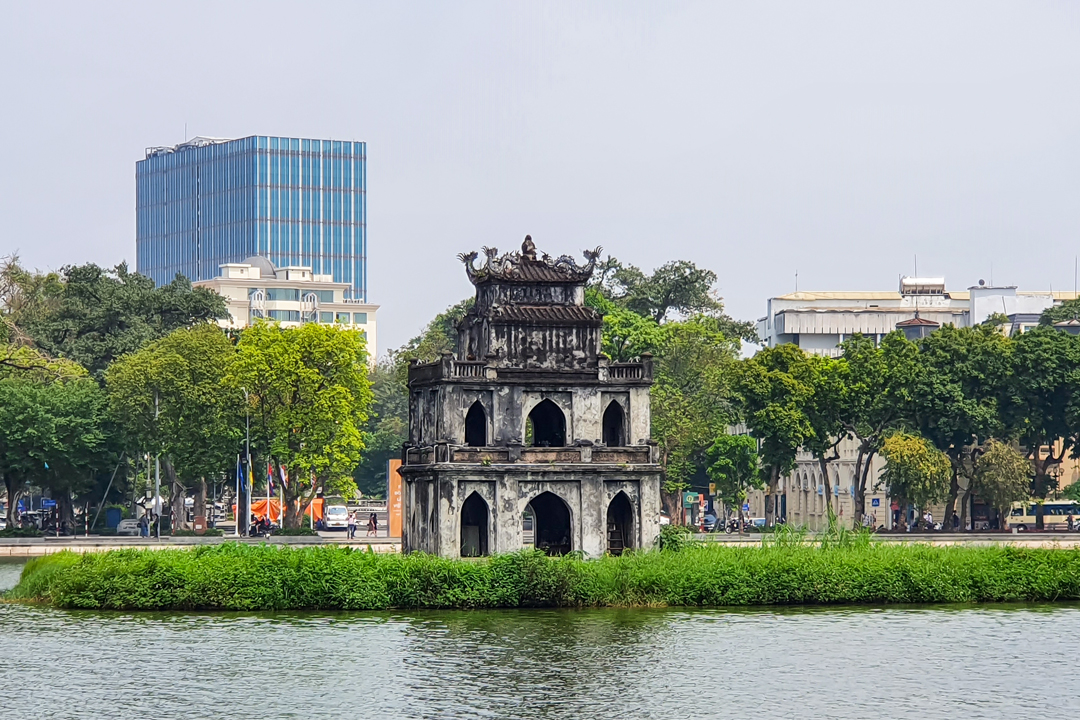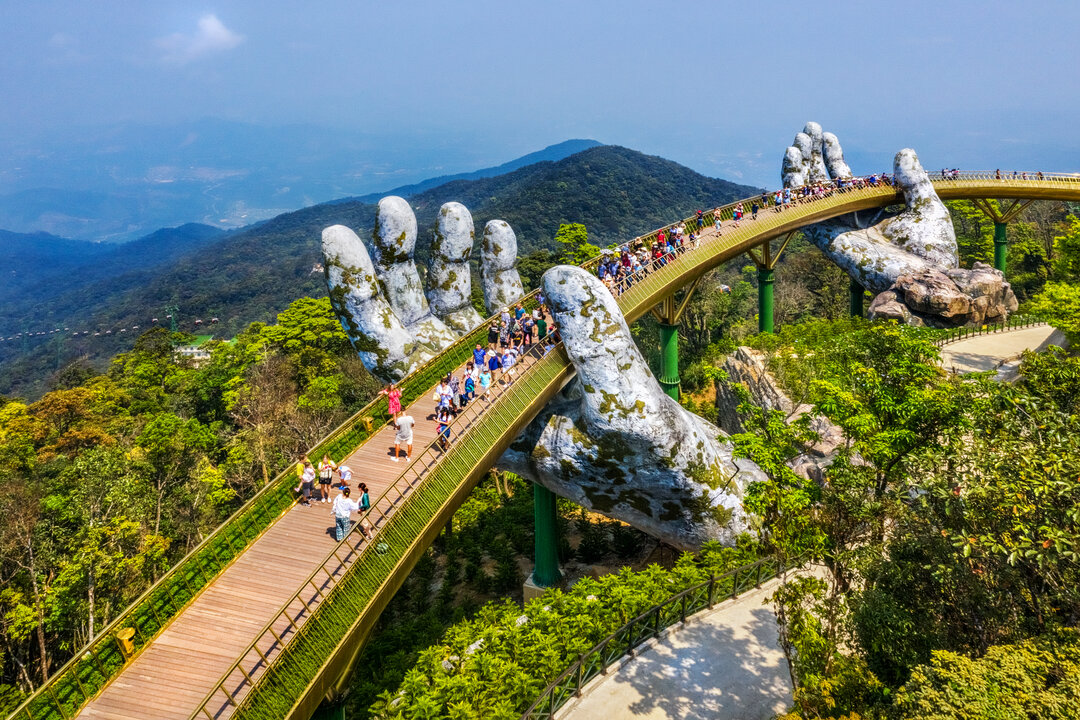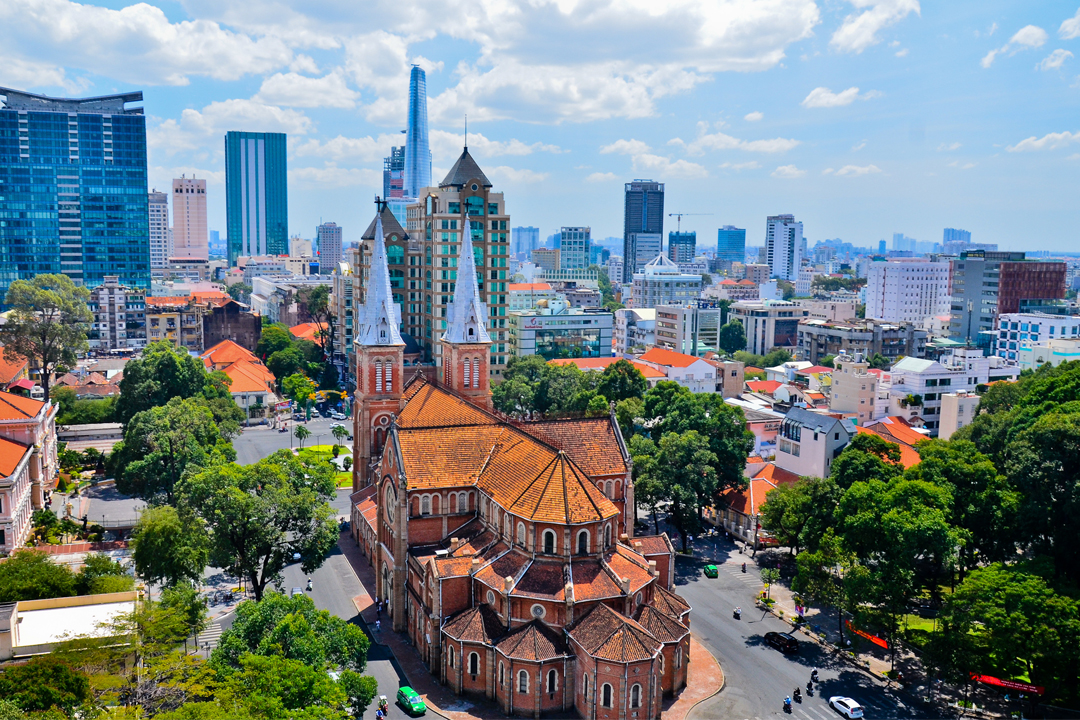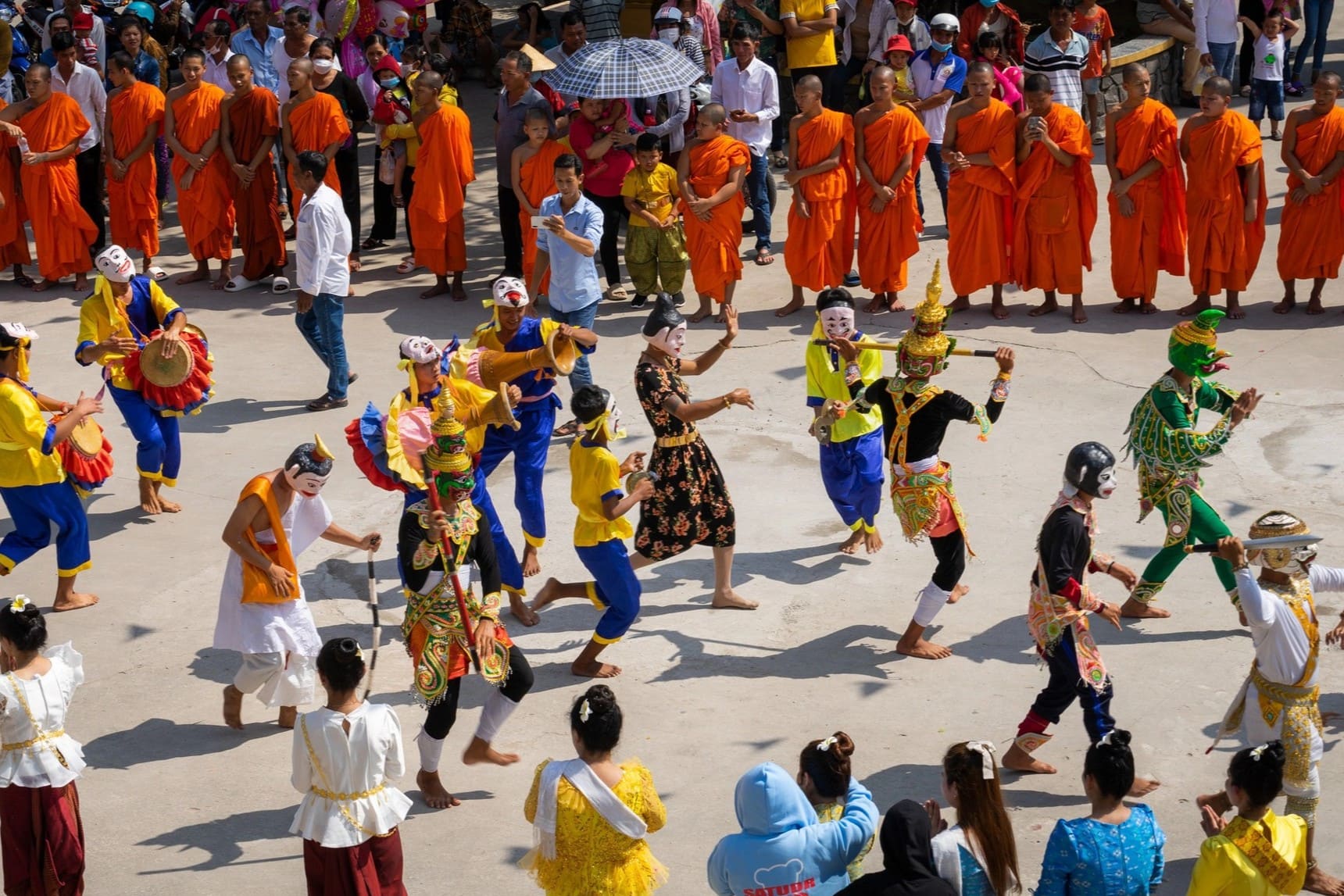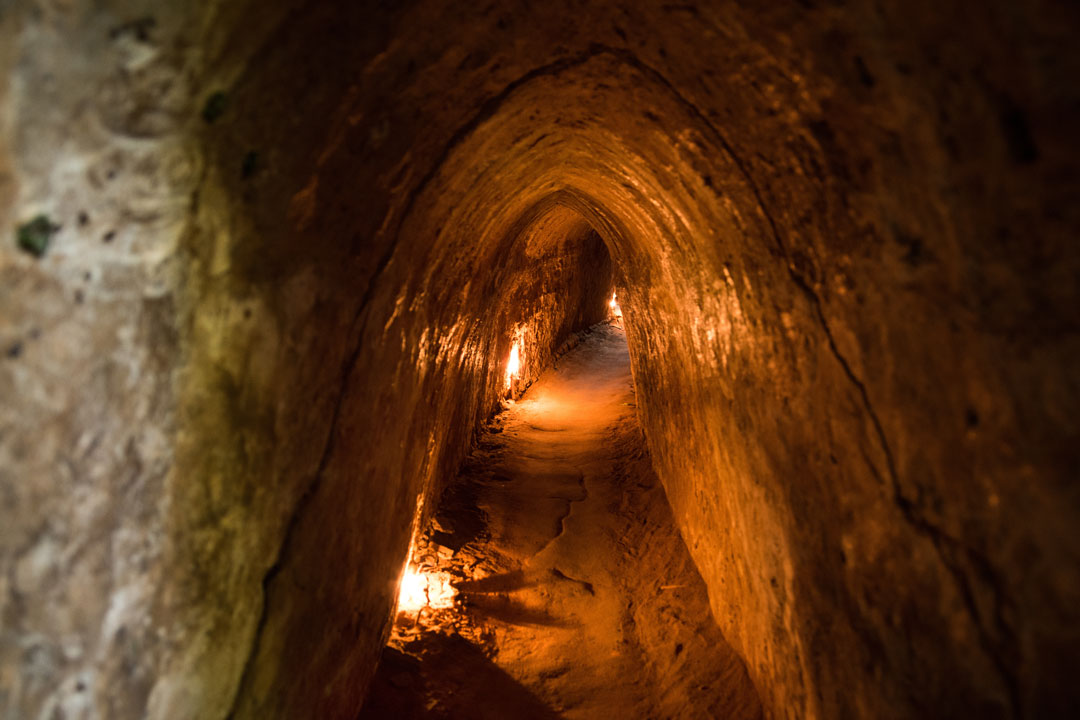Cu Chi Tunnels: History, Architecture, Things To Do & Travel Guide
The Cu Chi Tunnels (Dia dao Cu Chi) in southern Vietnam reveal a remarkable story of resilience, ingenuity, and survival beneath the peaceful countryside. This vast underground network of passageways, living quarters, and wartime relics offers a vivid glimpse into life during the war. With GTrip, you can explore authentic artifacts and preserved tunnels on immersive guided tours that bring history to life. Step into this living museum and experience the extraordinary depth of the Cu Chi Tunnels for yourself.
Overview of Cu Chi Tunnels
To fully appreciate the Cu Chi Tunnels, it’s helpful to first explore their history, including their origins, development, and role during the Vietnam War. Before heading there, make sure to check the opening hours, ticket prices, and the best times to visit. Once at the site, there are plenty of activities to enjoy, from exploring the tunnel complex to experiencing local attractions and interactive experiences.
Where is Cu Chi Tunnels?
Location: Cu Chi Commune (formerly Phu Hiep, Cu Chi District, Ho Chi Minh City)
Located about 70 km northwest of Ho Chi Minh City, Cu Chi Tunnels is a miniature of the creative and varied battle formations of the army and people of Cu Chi. It stands as a powerful symbol of resistance and resilience, bearing significant historical weight rooted deeply in the Vietnam War.
Opening hours & Ticket prices of Cu Chi Tunnels
The Cu Chi Tunnels welcome visitors every day, allowing flexible planning for your trip, but checking the exact opening hours and ticket prices beforehand ensures a hassle-free experience.
- Opening hours: 7:00 AM - 7:00 PM every day, including weekends and public holidays.
- Entrance tickets:
- Vietnamese tourists: 35,000 VND/person (~$1.36)
- Foreign visitors: 70,000 VND/person (~$2.73)
- Children aged 7 - 16 (students): Receive a 50% discount on the adult ticket price
- Free admission is available for: People with disabilities, armed forces personnel, children under 7 years old, senior citizens, individuals recognized for their contributions to the revolution, and low-income households.
It is recommended to purchase tickets at the official entrance or through trusted travel agencies to avoid scams. Booking a guided tour often includes the entrance fee along with transportation and an English-speaking guide.
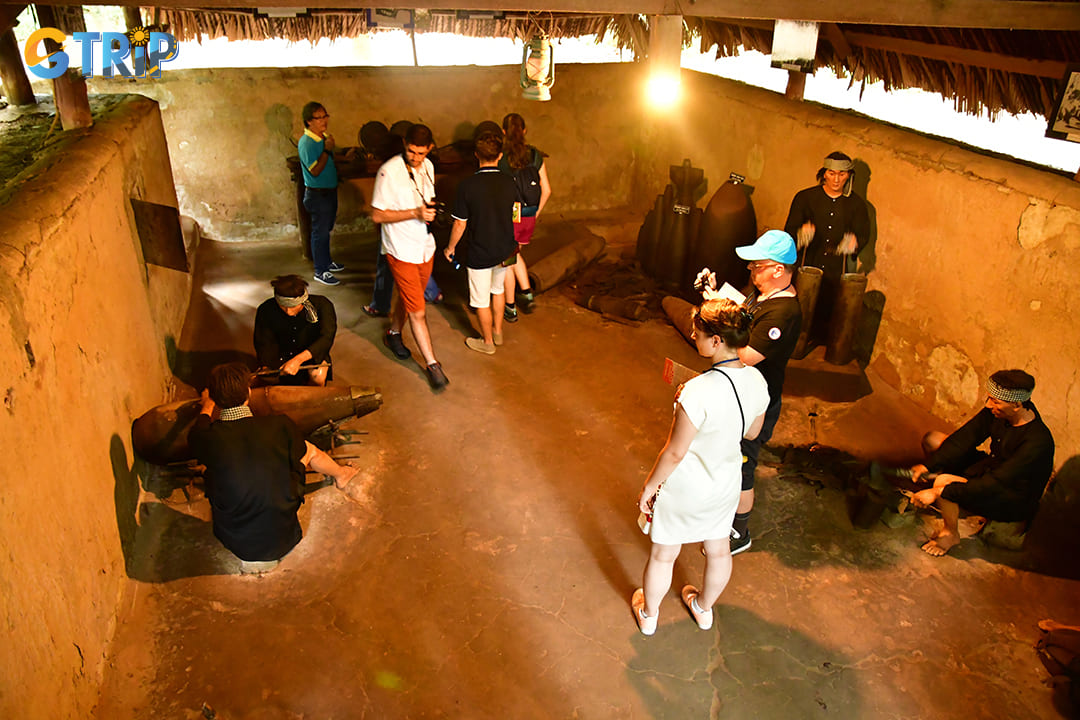
The Cu Chi Tunnels are open daily, making it easy for tourists to plan their trip at their convenience
Best time to visit Cu Chi Tunnels
The best time to visit the Cu Chi Tunnels depends on both the weather and crowd levels. Vietnam has a tropical climate, meaning some seasons offer a more comfortable experience than others.
- Ideal season: The ideal time to explore is the dry season, from December to April, when rain is scarce and outdoor activities are more enjoyable. Temperatures range from 25°C to 33°C (77°F to 91°F), and humidity is lower compared to other months.
- Avoiding crowds: Mornings are generally the best time to visit, especially if you arrive before 9:00 AM to avoid large tourist groups. Weekdays tend to be less crowded than weekends.
If visiting in the rainy season (May to November), be prepared for muddy trails and humid conditions. Bringing an umbrella or raincoat is advisable during these months.
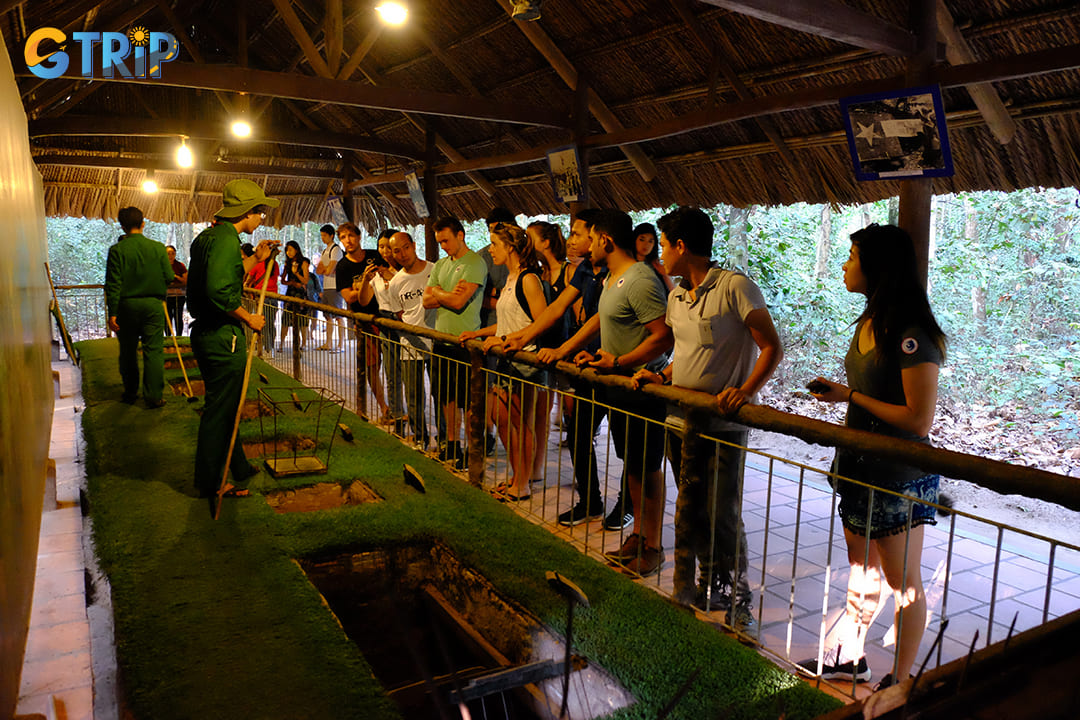
The best time to visit is during the dry season (December to April) when there is minimal rainfall
How to get to the Cu Chi Tunnels?
Situated roughly 50 kilometers (31 miles) northwest of Ho Chi Minh City, the Cu Chi Tunnels can be reached through various means, depending on your budget and travel preferences.
1. By bus
For those looking for a cost-effective way to visit:
- Route: Take bus 13 from Ben Thanh Bus Station → transfer to bus 79 to reach Cu Chi Tunnels
- Total travel time: 2.5-3 hours
Approximate cost:: ~40,000 VND (~$1.56) per person
While this is the cheapest option, it requires time and patience due to multiple transfers and longer travel duration.
2. By private car or taxi
Hiring a private car or taking a taxi is the fastest and most convenient way to reach the tunnels.
- Travel time: 1.5 hours
- Estimated cost: 600,000 - 1,200,000 VND ($25 - 50) one way, depending on the service provider and vehicle type
This option is recommended for families or groups. It provides a direct and comfortable journey.
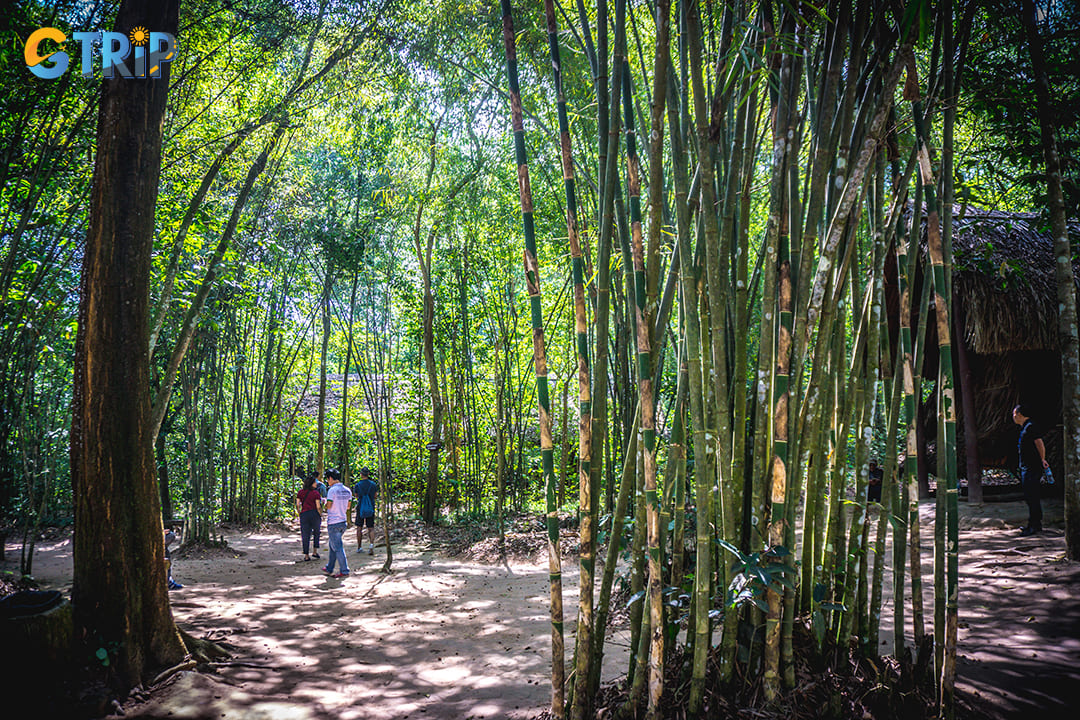
There are multiple ways to reach them depending on your budget and preferred level of convenience
3. By motorbike
For those comfortable riding in Vietnam’s traffic, renting a motorbike is an adventurous way to explore Cu Chi.
- Travel time: 1.5 - 2 hours
- Rental cost: 150,000 - 250,000 VND ($6 - 10) per day
Be sure to wear a helmet and follow traffic rules. Also, check the weather conditions before heading out
4. By guided tour
The Cu Chi Tunnels welcome visitors every day, allowing flexible planning for your trip, but checking the exact opening hours and ticket prices beforehand ensures a hassle-free experience.
- Tour prices range from 350,000 to 1,000,000 VND ($15 - $40) per person, depending on inclusions.
- Many Ho Chi Minh City tours also combine Cu Chi with other attractions like the Mekong Delta or the War Remnants Museum.
Choosing the best transportation method depends on your budget, time constraints, and travel preferences, ensuring a smooth and enjoyable visit to this historic site.
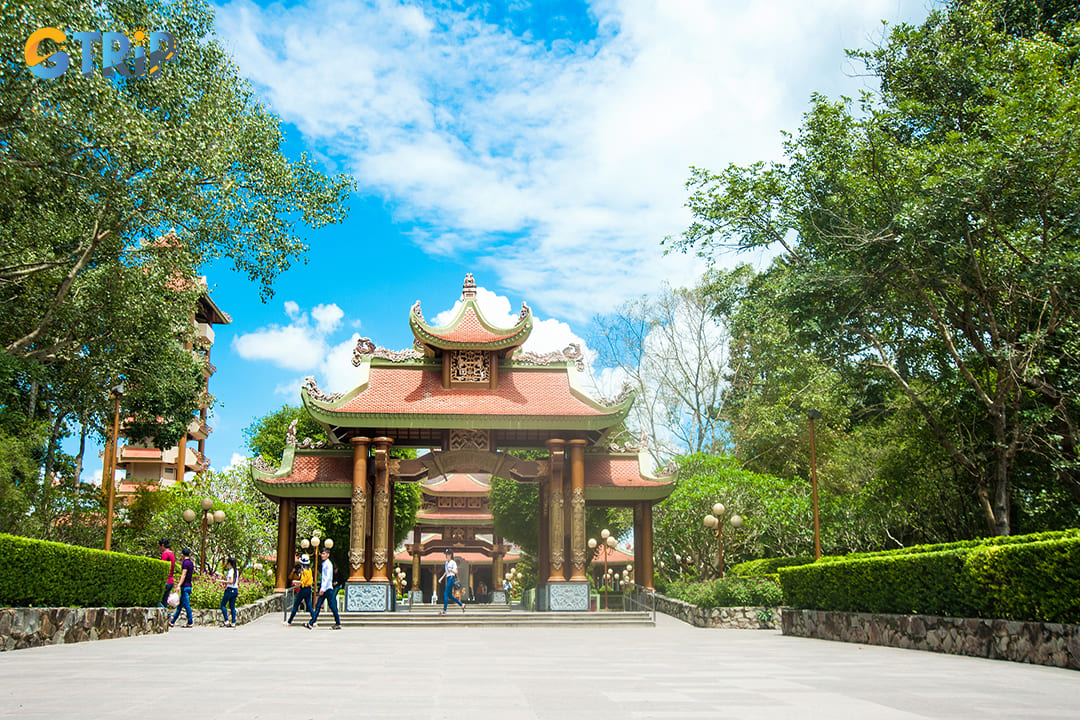
Most travelers choose guided tours, which include transportation, entrance tickets, and an English-speaking guide
History of the Cu Chi Tunnels
The Cu Chi Tunnels hold a remarkable past that reflects the resilience and ingenuity of the Vietnamese people. From modest shelters to an extensive wartime network, these underground passages became a strategic stronghold during the Vietnam War.
Origins and development
The history of the Cu Chi Tunnels dates back to the late 1940s during the First Indochina War when Vietnamese resistance fighters began constructing primitive tunnels to evade French patrols. By 1948, these tunnels had become an essential means of transportation and communication for the Viet Minh, helping them outmaneuver colonial forces. The tunnel network started as a small, disconnected system, but as the conflicts escalated, it grew into a complex underground structure that became the foundation for future military operations.
Role in the Vietnam War
During the Vietnam War (1955 - 1975), they served as a vital base of operations for forces aligned with North Vietnam who utilized guerrilla warfare tactics against more technologically advanced opponents. Throughout the early 1960s, the tunnel network expanded dramatically, eventually stretching over 250 kilometers. By 1965, it had evolved into an intricate, multi-layered system that allowed for strategic planning, surprise offensives, and protection from aerial bombardments.
The tunnels were equipped with essential infrastructure such as living quarters, field hospitals, storage areas for weapons, and communication hubs, supporting prolonged conflict efforts. Several major military campaigns were launched to neutralize the tunnel system, including Operation Crimp in January 1966 and Operation Cedar Falls in January 1967. Despite intense efforts by U.S. and South Vietnamese forces, the complex design and determined resistance allowed the tunnel network to remain a formidable challenge.
The strategic architecture of the Cu Chi Tunnels provided significant advantages, enabling covert movement of personnel and supplies, execution of surprise attacks, and rapid retreats into the subterranean maze. Hidden entrances, trap doors, and defensive mechanisms like booby traps added layers of security. Moreover, the very presence of this unseen, underground force created psychological pressure on opposing troops, amplifying the uncertainty and complexity of warfare in the region.
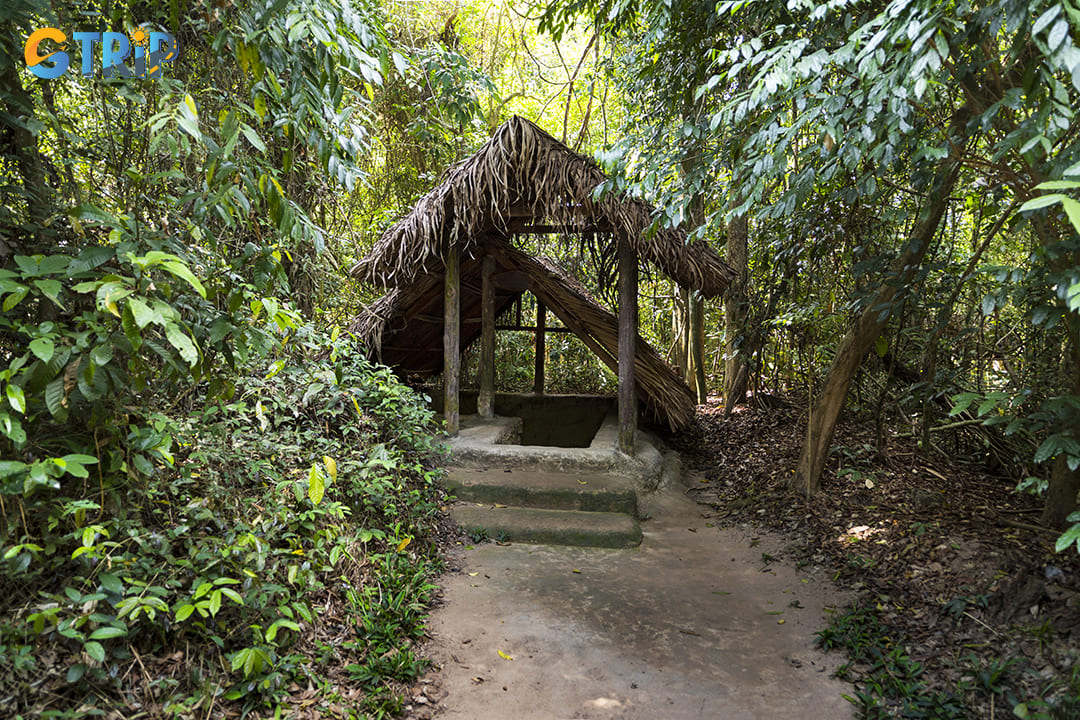
It expanded into a more sophisticated underground system that laid the foundation for future military operations
Post-war preservation efforts
Following the end of the Vietnam War in 1975, the significance of the Cu Chi Tunnels transcended military history, evolving into a symbol of Vietnamese tenacity and perseverance. By 1976, efforts were initiated to preserve sections of the tunnel network as historical sites. Recognizing their historical importance, the government and cultural preservation societies undertook significant efforts to maintain the tunnels. Conservation initiatives were implemented to ensure their structural integrity while making them accessible to tourists. In the following decades, the tunnels were transformed into a living museum, offering guided tours and interactive exhibits that educate tourists on the realities of war and the ingenuity of the tunnel systems. Today, they serve as a major historical attraction, drawing tourists worldwide who seek to understand the complexities and challenges of guerrilla warfare.
Architecture and design of the tunnels
The Cu Chi Tunnels stand as a testament to human ingenuity and resilience. Their architecture is a reflection of effective military strategy and also a marvel of engineering. Built under immense pressure during the Vietnam War, these tunnels showcase the Viet Cong's tactical brilliance. This section will delve into the intricacies of their architecture and design.
Multi-layered tunnel systems
The tunnel systems are a complex labyrinth consisting of multiple layers, stretching over 250 kilometers at their peak. These layers served different purposes, with the highest serving immediate combat functions and deeper levels used for strategic communication and storage. Typically, these tunnels were composed of three levels:
- First level (3 - 4 meters deep): This layer was used for general movement and included numerous fighting and patrol routes to launch surprise attacks or evade enemy bombing and assaults. It also included defensive structures like trapdoors and firing posts.
- Second level (6 - 9 meters deep): This layer was crucial for logistical purposes. Amenities such as kitchens, makeshift hospitals, and command centers were housed here. Smoke from the kitchens was carefully channeled to disperse afar without giving away the tunnels' location.
- Third level (up to 12 meters deep): Used as a final refuge during intense raids and bombing, this level often contained emergency supplies. The depth offered protection against artillery and carpet bombing, ensuring the survival of its inhabitants.
The design allowed for both horizontal and vertical connectivity, ensuring flexible movement across different sections. Entrances were camouflaged skillfully, often under trapdoors pioneering deceptive warfare techniques.
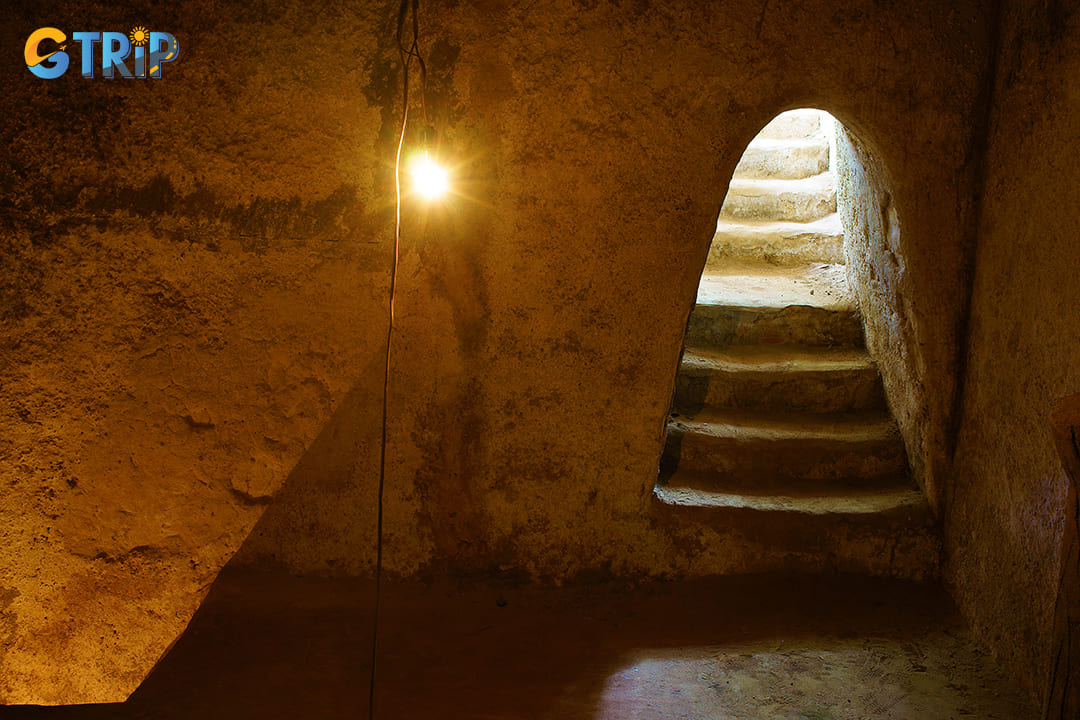
The tunnel systems are a complex labyrinth consisting of multiple layers, stretching over 250 kilometers at their peak
Engineering marvels
The construction of the Cu Chi Tunnels was nothing short of an engineering marvel. The soil in the Cu Chi District, primarily a dense clay known locally as "latérite", proved both a challenge and an advantage. Its heaviness made excavation labor-intensive, yet its stability ensured that tunnels would not easily collapse, even under bombardment.
Some significant engineering features include:
- Trap systems: Ingenious booby traps were installed throughout, acting as a first line of defense against intruders. These included simple yet effective mechanisms, such as punji stake traps and hidden pitfalls, to deter and incapacitate enemies.
- Communication systems: Underpinning the tunnels was a sophisticated communication network. Drums, lights, and sound signals were strategically positioned, ensuring seamless coordination during operations.
- Water drainage and storage: Comprehensive drainage systems were essential for handling the monsoon rains of Vietnam. Additionally, sealed storage areas handled munitions and food supplies, protecting them from water damage.
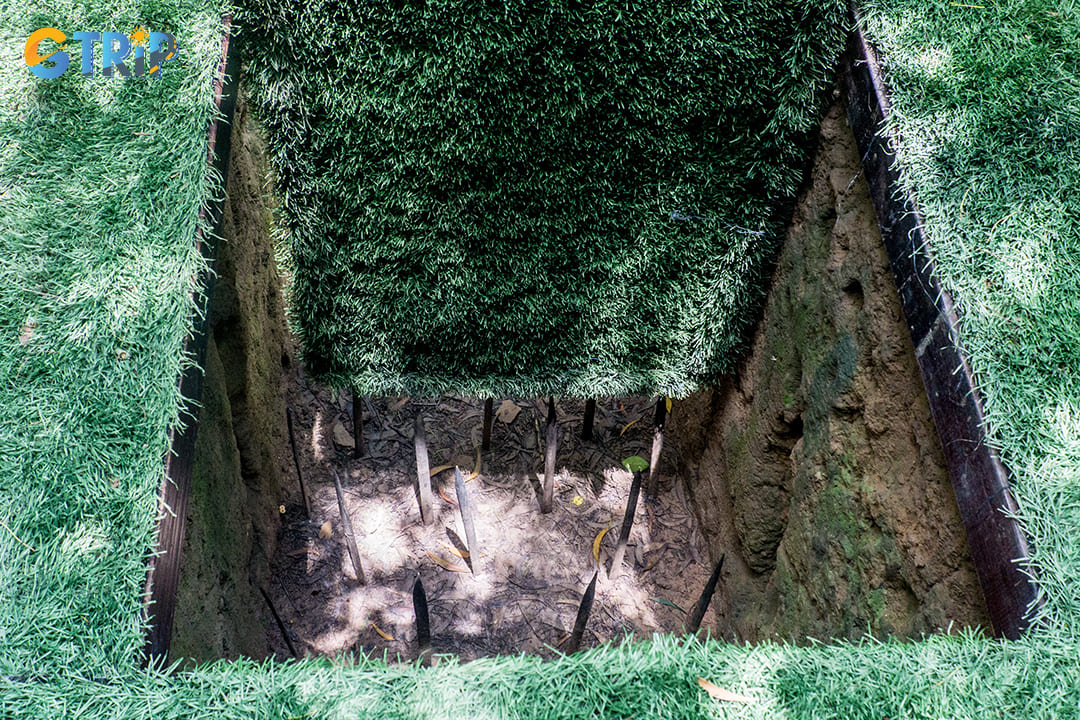
Ingenious booby traps were installed throughout, acting as a first line of defense against intruders
Living conditions underground
Living in the tunnels was a feat in itself. Soldiers and civilians alike endured harsh conditions, with limited air, water, and hygiene facilities. Adaptations to these conditions were necessary for survival:
- Ventilation shafts: Ingeniously designed to disguise as termite mounds, these shafts circulated air deep into the tunnel system, mitigating the intense heat and humidity inside.
- Water wells and filtration units: Techniques were developed to acquire and purify water underground, ensuring a steady supply for consumption and medical use.
- Living quarters: Though cramped, these spaces were purposefully arranged to maximize utility. Sleeping quarters, kitchens, and meeting rooms had to be both functional and quickly convertible should an emergency require abandonment.
The psychological strain of living in such confined and perilous conditions cannot be underestimated. Yet, it was this environment that also fostered a strong sense of community and resistance among the tunnel inhabitants.
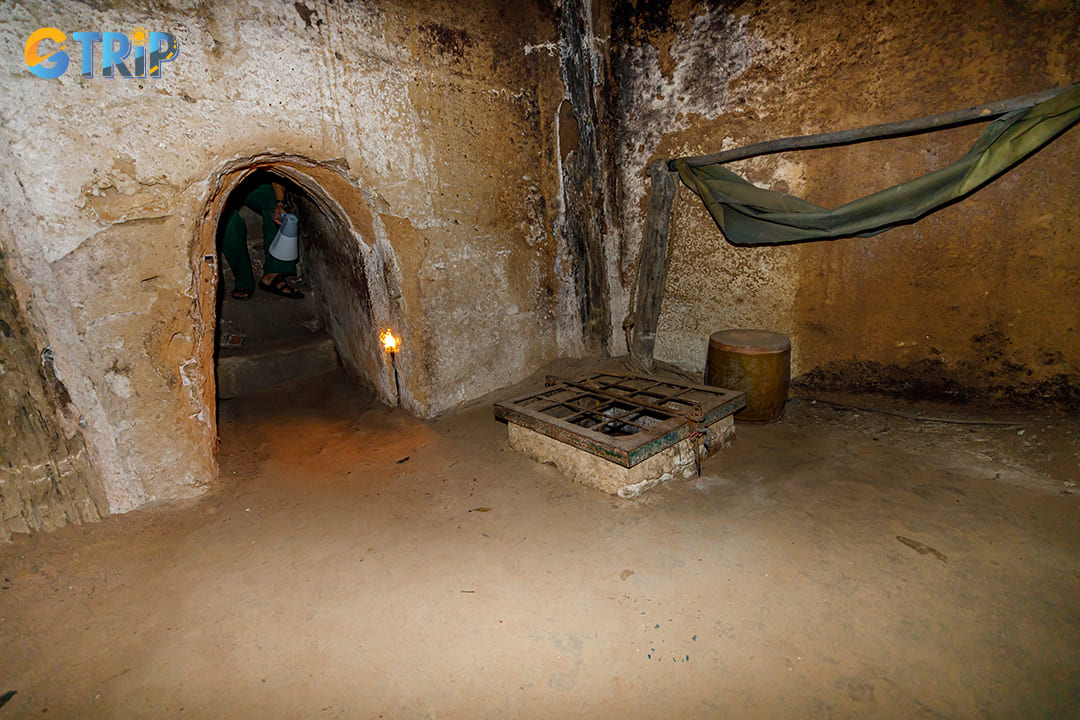
Soldiers and civilians alike endured harsh conditions, with limited air, water, and hygiene facilities
The architecture and design of the Cu Chi Tunnels underline their strategic importance and the ingenuity of their creators. Beyond mere passageways, they facilitated a form of warfare that relied on stealth, surprise, and intricate knowledge of the terrain. As a modern-day historical artifact, the tunnels offer both a poignant reminder of war's realities and a tribute to human ingenuity and resilience.
Guerrilla warfare tactics
The intricate guerrilla warfare tactics developed within the Cu Chi Tunnels played a crucial role in enabling local forces to confront a more technologically advanced adversary. These tactics were grounded in adaptability, resourcefulness, and an intimate understanding of the terrain. This section explores the specific strategies and systems that defined this form of warfare.
Trap systems and defenses
The traps and defensive mechanisms found throughout the tunnel network reflect a high level of ingenuity, with simple materials transformed into powerful tools of resistance.
- Types of traps: Common traps included punji stake pits, door-triggered spikes, and hidden grenade devices. Punji stake traps, for instance, consisted of concealed pits lined with sharpened bamboo spikes, often coated with natural toxins to increase their lethality.
- Defensive architecture: The tunnel system itself functioned as a defense mechanism. Narrow passageways, tight turns, and layered levels were designed to disorient intruders. False tunnels, dead ends, and hidden trapdoors added further layers of protection.
- Camouflage and concealment: Tunnel entrances and traps were masterfully hidden, blending seamlessly with the forest floor or village surroundings. This level of concealment ensured that defensive measures remained undetected until the very last moment.
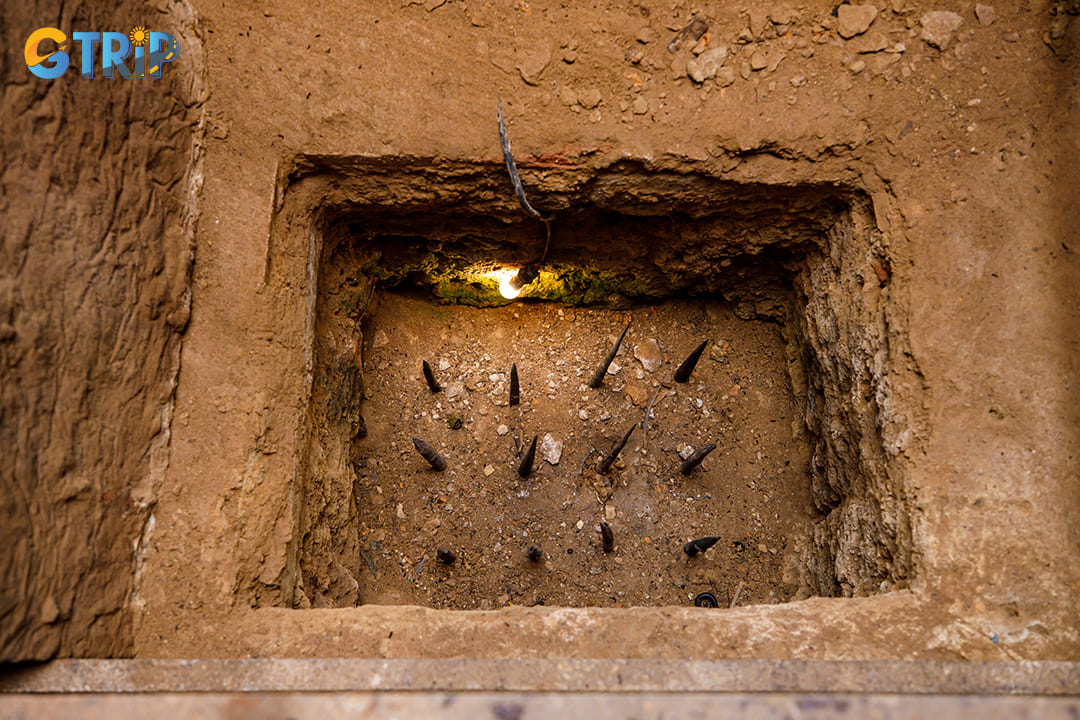
The traps and defensive mechanisms found throughout the tunnel network reflect a high level of ingenuity
Communication and supply routes
Beyond combat, the tunnels served as a logistical backbone, allowing for the secure movement of people, information, and resources underground.
- Innovative communication systems: Without modern technology, messages were still relayed quickly through an internal network of concealed passageways and trusted messengers.
- Supply chain management: The tunnel system supported the discreet transport of food, medicine, weapons, and essential supplies, maintaining operations without exposing supply lines to aerial surveillance or patrols.
- Strategic logistical nodes: Storage areas, meeting points, and medical facilities were carefully placed throughout the network, minimizing risk and maximizing operational efficiency.
Psychological warfare strategies
In addition to physical tactics, psychological warfare played an instrumental role in the Viet Cong's strategy. This involved striking at the heart and mind of the enemy, fostering uncertainty and demoralization amongst troops.
- Use of psychological operations: By employing tactics such as night raids and sudden ambushes, the Viet Cong instilled a constant state of alertness, leading to psychological fatigue among enemy troops. The ability to appear and disappear seemingly at will further compounds the stress experienced by soldiers on patrol.
- Exploiting enemy perceptions: The Viet Cong capitalized on the enemy's assumptions and fears, often leveraging misinformation to create confusion. This unpredictability undermined the confidence of adversary forces, making every move a potential risk.
- Civic engagement and local support: Psychological warfare extended into the civilian realm by fostering strong support within local communities. This engagement built networks of informants and collaborators who provided crucial intel and assisted in maintaining the secrecy of tunnel activities.
The guerrilla warfare tactics employed throughout the Cu Chi Tunnels network represented a strategic confluence of innovation, resourcefulness, and cultural understanding. By combining physical defenses with psychological strategies, the Viet Cong maintained an effective resistance against superior forces, demonstrating the powerful potential of guerrilla warfare. This fusion of tactical elements remains a compelling study of resilience and adaptability in military history.
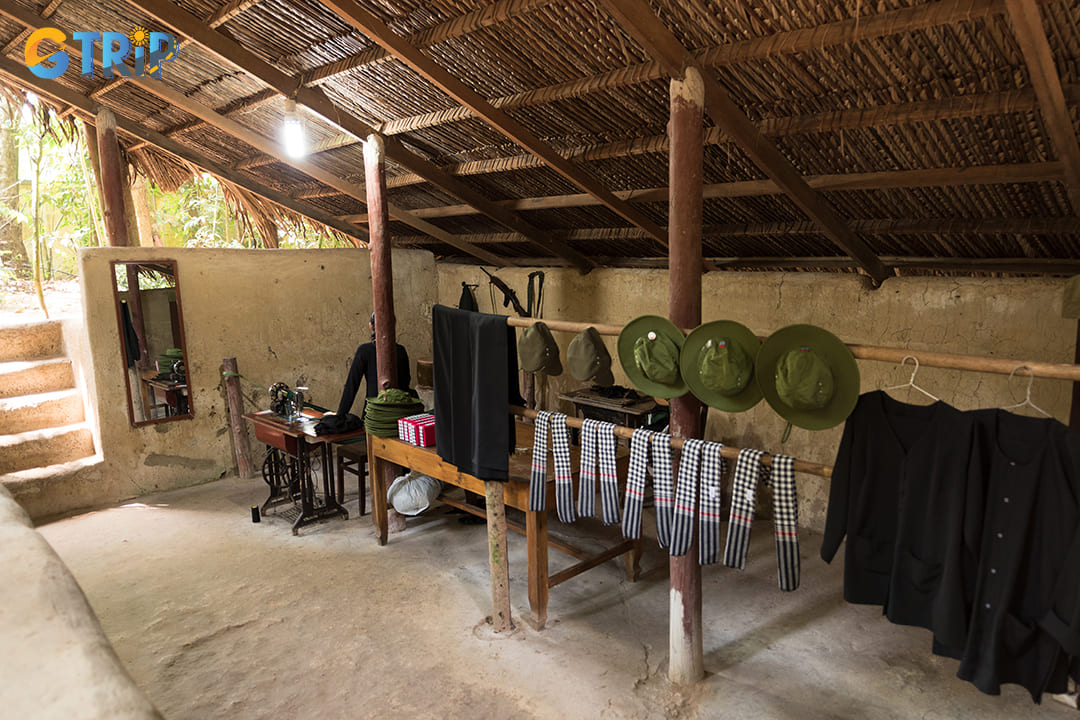
In addition to physical tactics, psychological warfare played an instrumental role in the Viet Cong's strategy
10 things to do when visiting the Cu Chi Tunnels
The Cu Chi Tunnels offer a range of activities that allow you to explore Vietnam’s wartime history while engaging in immersive and interactive experiences.
1. Experience the Cu Chi Tunnels complex
The Cu Chi Tunnels have two main sections open to visitors:
- Ben Dinh Tunnels: Located closer to Ho Chi Minh City, this site is more frequented by tourists and offers reconstructed tunnels tailored for visitors.
- Ben Duoc Tunnels: Situated further away, this site provides a more authentic and less crowded experience, showcasing the original tunnel system.
The expansive underground passages form the main attraction of the Cu Chi Tunnels. Here, you can explore a 120-meter stretch of tunnel featuring two levels, offering a first-hand look at the remarkable engineering of the time. Built from laterite-mixed clay, the structure is impressively durable, with little risk of collapse. Cleverly designed air vents are hidden and well-camouflaged at ground level, ensuring both historical accuracy and visitor safety.
Be prepared, the passageways are narrow, and some sections require crouching or even crawling on your knees. It’s an exciting experience, but one that’s best suited for those in good physical condition. Consider your comfort level and health before venturing underground.
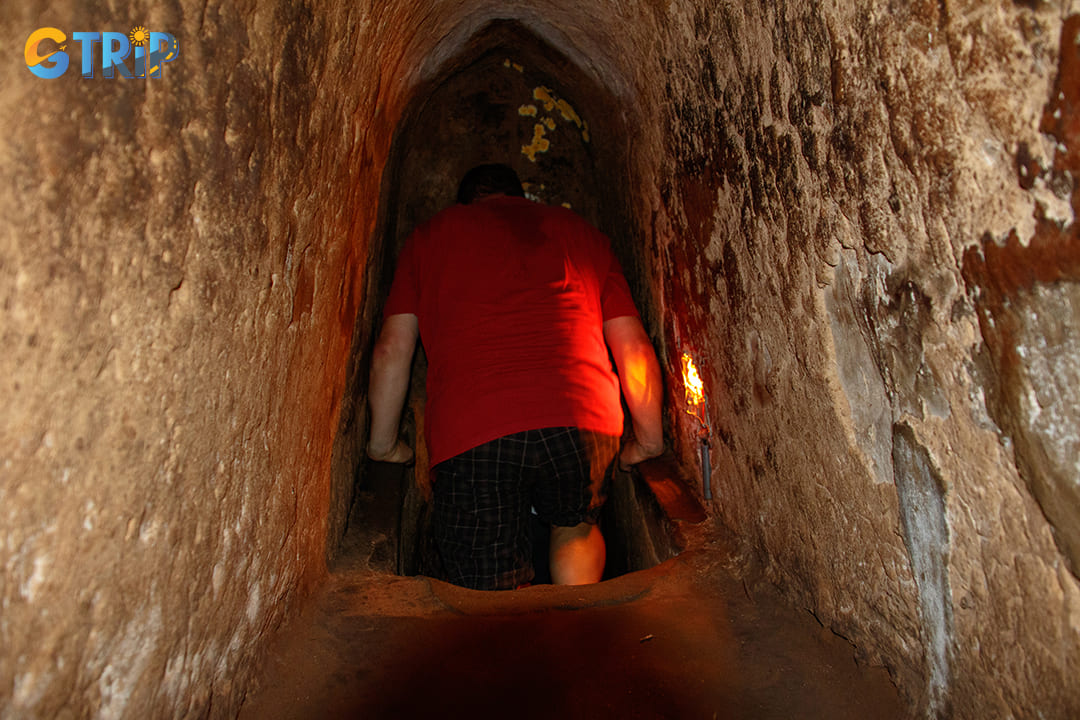
The underground tunnel system is undoubtedly the centerpiece of the Cu Chi Tunnels
2. Visit the Reconstructed Liberation Area
The Reconstructed Liberation Area offers an immersive experience of Cu Chi’s landscape and daily life from 1961 to 1972, a time marked by fierce resistance and hardship. This open-air exhibit brings history to life, vividly portraying how people lived, fought, and endured during the war.
You can watch emotional documentary films and explore three distinct zones that chronologically represent different stages of the conflict:
- Zone 1 (1961 - 1964): This area recreates the early years of resistance, showcasing how civilians and soldiers lived, worked, and fought together in the liberated zone.
- Zone 2 (1965 - 1968): A powerful depiction of devastated villages and the suffering of local communities during a time when bombings and battles intensified.
- Zone 3 (1969 - 1972): This section reflects the severe destruction caused by heavy bombardments and chemical warfare, forcing life to retreat underground as the surface became uninhabitable.
Each space offers a moving tribute to the resilience of those who lived through one of Vietnam’s most turbulent chapters.
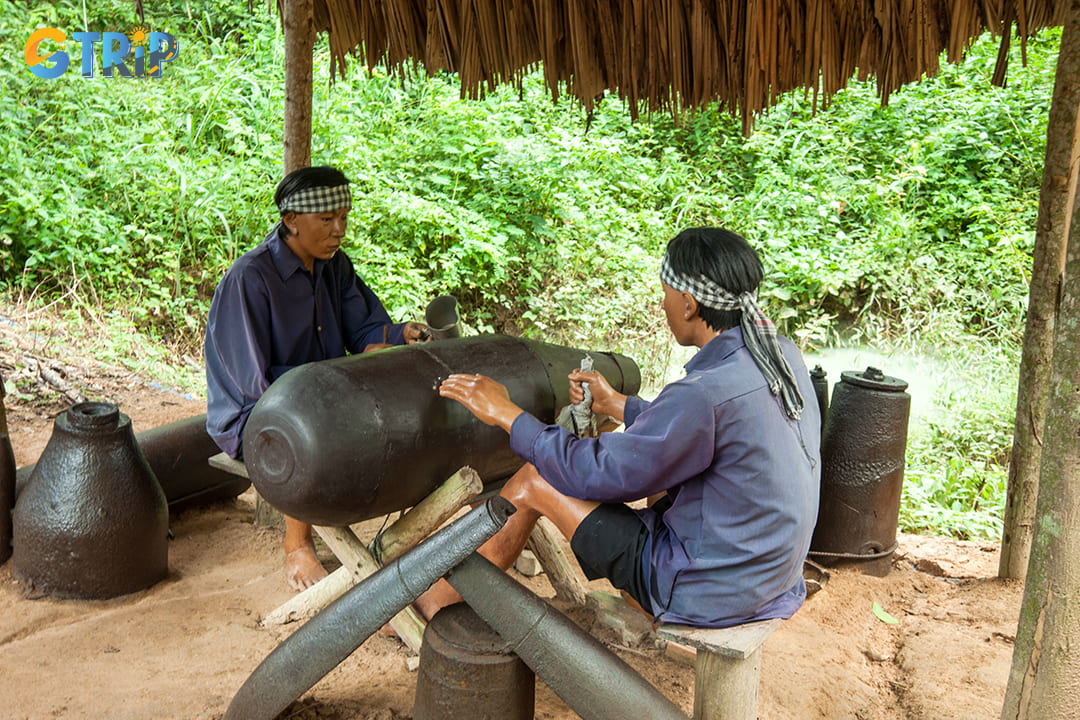
The Reconstructed Liberation Area reenactment areas depict life during wartime
3. Try the gun-shooting and paintball-shooting
For those interested in a more interactive experience, you can visit a shooting range where you can fire weapons used during the Vietnam War, such as the AK-47 and M16 rifles. This activity is supervised to ensure safety. The entrance fee for this site is about 40,000 - 60,000 VND depending on time and region. Bullets from different types of real guns will have different denominations, so you can learn more when visiting. Additionally, paintball shooting is available for tourists seeking a recreational activity. The paintball experience is priced at approximately 50,000 VND for a 60-minute session.
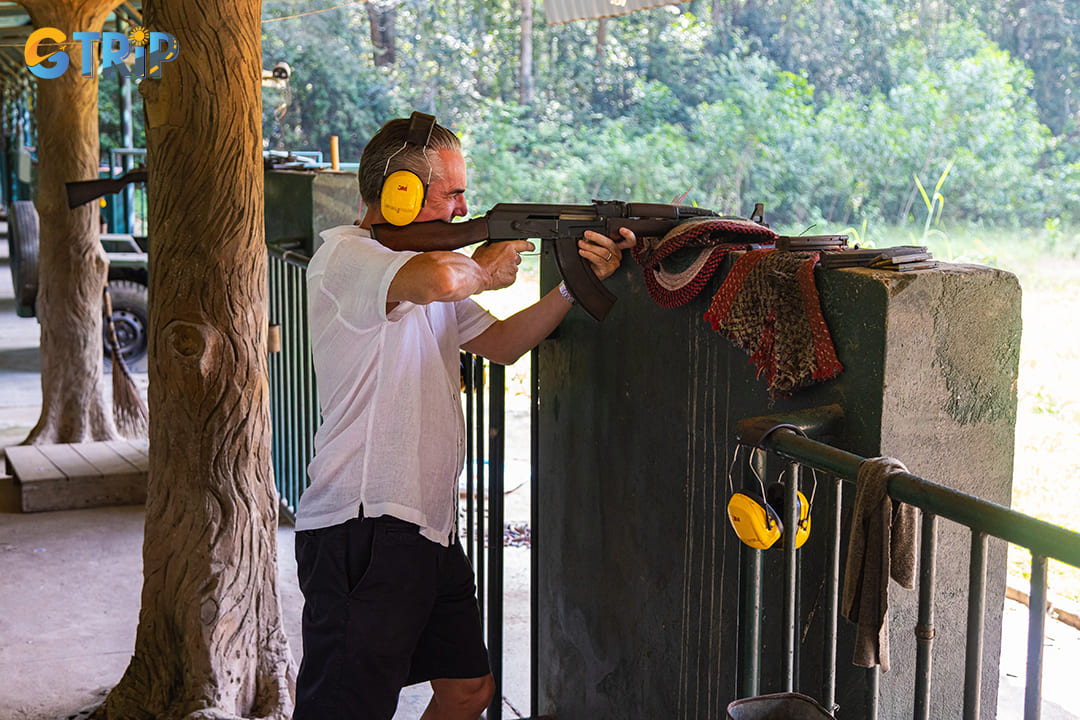
For those interested in a more interactive experience, the Cu Chi Tunnels site features a shooting range where you can fire weapons used during the Vietnam War
4. Visit the Cu Chi Wildlife Rescue Station
The Cu Chi Tunnel map will guide you to the nearby Wildlife Rescue Station, located just 1 kilometer from the main tourist area, between Ben Duoc and Ben Dinh. This is the largest wildlife rescue center in southern Vietnam, home to over 3,600 rare and endangered animals.
You can interact with some of the rescued animals in a safe and respectful environment while learning touching stories about their backgrounds, as shared by dedicated staff members. It’s a meaningful stop that adds a refreshing and compassionate dimension to your Cu Chi adventure.
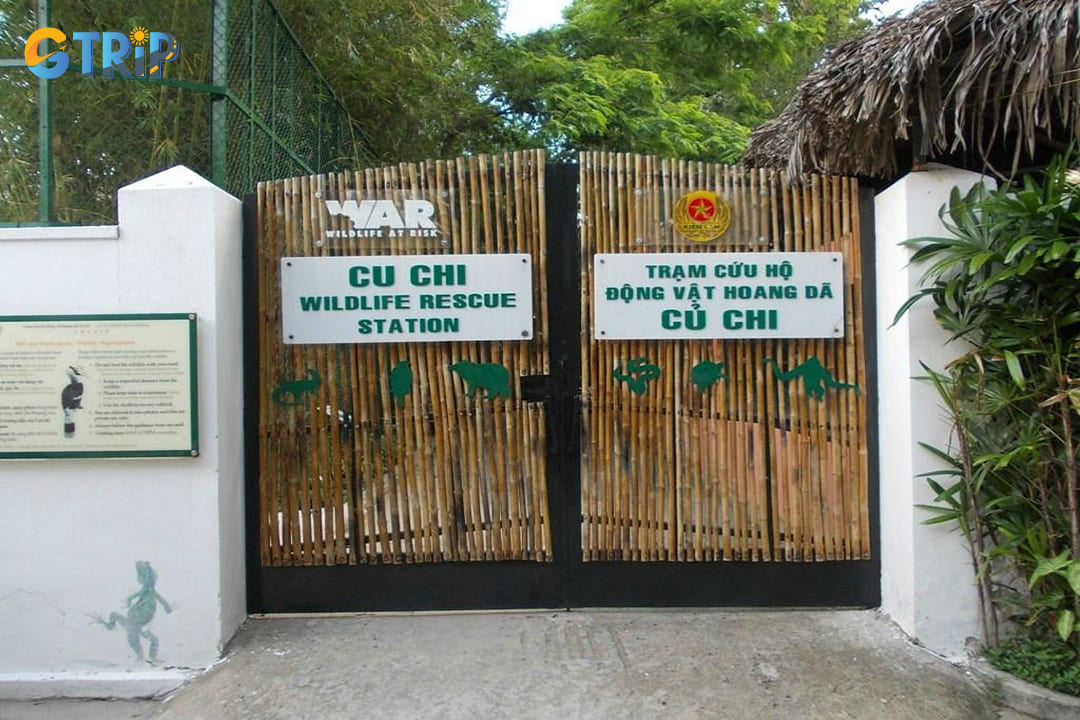
Cu Chi Wildlife Rescue Station is the largest wildlife rescue center in southern Vietnam
5. Explore Cu Chi water games & recreation area
Located within the Reconstructed Liberation Area, this recreational zone is just a 15-minute walk away. Here, you’ll find a scenic lake designed to resemble the East Sea, surrounded by lush landscapes and a forest of valuable hardwood trees. One of the highlights is the set of iconic architectural models representing Vietnam’s three regions: the One Pillar Pagoda (North), Ngo Mon Gate (Central), and the Ho Chi Minh Museum at Nha Rong Wharf (South).
You can also enjoy a range of outdoor activities, including swimming in the pool, cycling around the lake, or paddling a kayak. This area is perfect for unwinding after exploring the historical exhibits. There is a camping site near the lake that you can try camping here to enjoy the fresh atmosphere.
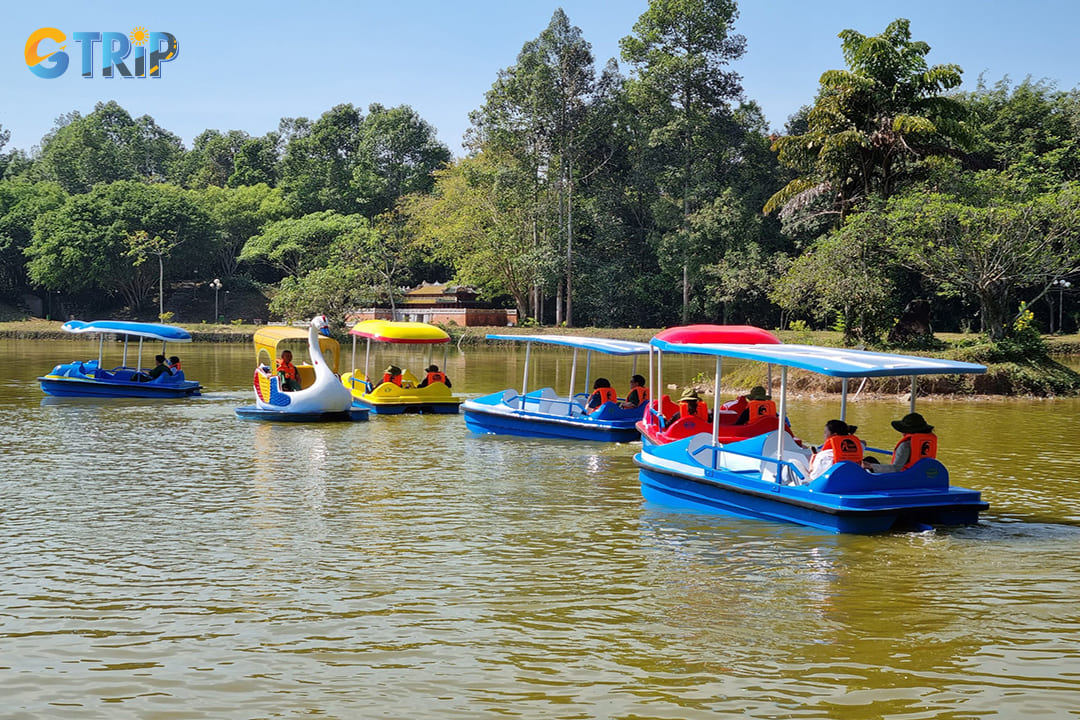
You can find a scenic lake designed to resemble the East Sea, surrounded by lush landscapes and a forest of valuable hardwood trees
6. Shop for unique souvenirs and local crafts
Several souvenir shops near the Cu Chi Tunnels offer a range of items, including handcrafted goods, military memorabilia, and traditional Vietnamese products. Purchasing these souvenirs supports local artisans and provides a meaningful memento of your visit.
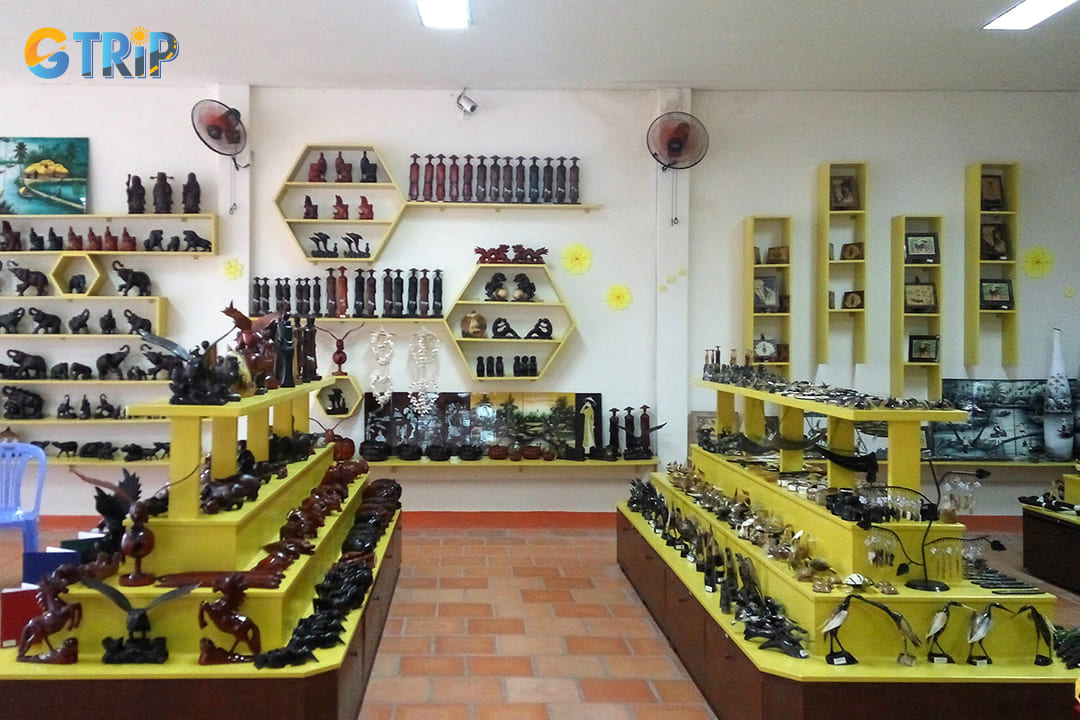
Several souvenir shops near the Cu Chi Tunnels offer a range of items
7. Join the thrilling game zone at Cu Chi Tunnels
The Cu Chi Tunnels, renowned for their historical significance, also offer an exhilarating game zone designed for adventure enthusiasts seeking a unique blend of history and physical activity. This area provides tourists with various challenges that test agility, courage, and endurance amidst the lush Vietnamese landscape.
One of the standout attractions is the elevated adventure course, featuring an 80-meter zipline that propels participants through the treetops, offering a bird's-eye view of the surrounding area. For those seeking an adrenaline rush, the 8-meter-high Tarzan jump provides a thrilling free-fall experience. Additionally, the course includes canopy walks and obstacle challenges that require balance and coordination, all set within the natural beauty of the forest. Safety is a top priority, with all activities designed and supervised by authorized agencies under the management of the Ben Duoc Tunnel board.
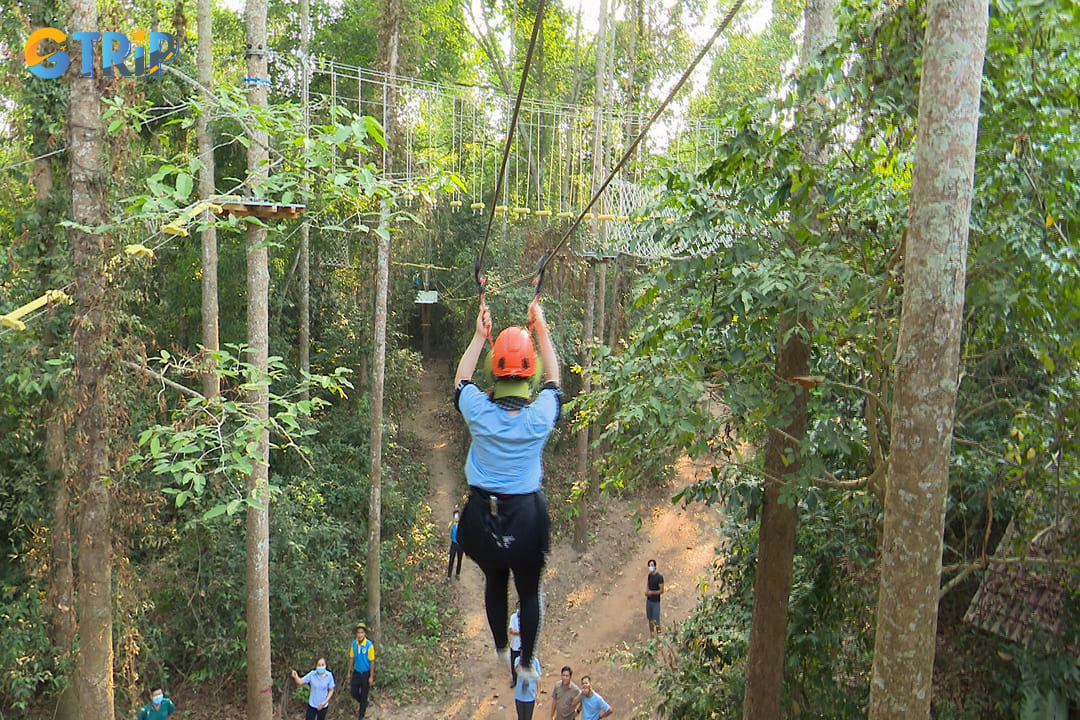
One of the standout attractions is the elevated adventure course, featuring an 80-meter zipline that propels participants through the treetop
8. Enjoy the swimming pool
Designed with a unique, nature-friendly architecture, the Cu Chi swimming pool area features two zones: a 150-square-meter pool for children and a spacious 500-square-meter pool for adults. The pools use a modern water circulation and filtration system, ensuring clean and safe water at all times.
The facilities are well-equipped with changing rooms, showers, and restrooms, offering comfort and convenience for all guests. After a day of exploring the historical site, this is the perfect place to unwind, relax, and enjoy the fresh, open-air atmosphere.
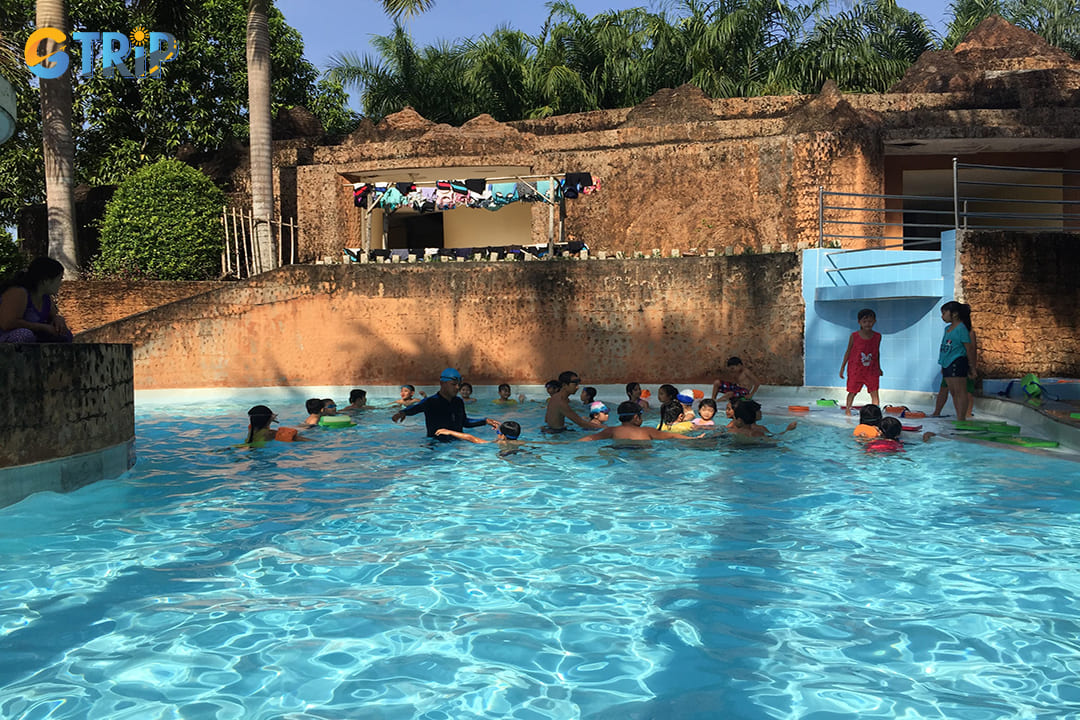
Designed with a unique, nature-friendly architecture, the Cu Chi swimming pool area features two zones
9. Savoring local flavors at Cu Chi Tunnels
Exploring the Cu Chi Tunnels offers not only a journey through Vietnam's rich history but also an opportunity to indulge in the region's unique culinary offerings.
- Cu Chi beef: Derived from heifers no older than five months, this beef is tender and flavorful. It's prepared in various ways, including grilling, stir-frying, hotpot, or boiling with rice paper.
- Cassava with sesame salt: A simple yet delightful dish where boiled cassava is sprinkled with sesame salt, offering a nostalgic taste of Vietnam's past.
- Durian sugarcane juice: A unique beverage combining the sweetness of sugarcane with the distinctive flavor of durian, attracting numerous tourists daily.
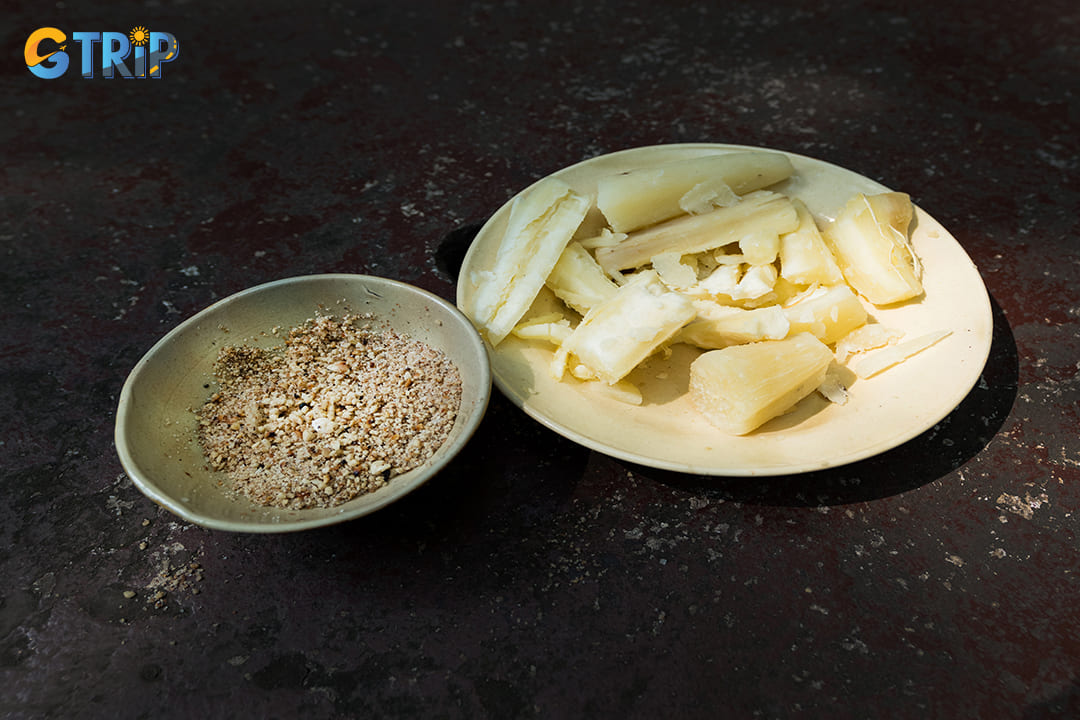
Eating cassava with sesame salt is a must when you visit Cu Chi Tunnels
10. Experience the night tour: "Moonlight in the Jungle"
Centered around the soft glow of the moon, the night tour recreates the authentic nighttime life of Cu Chi residents during the early years of the liberated zone, from 1961 to 1964. As you walk through the open-air setting, you'll witness vivid scenes brought to life through live performances and atmospheric effects.
Experience the daily rhythm of the past:
- Villagers digging tunnels by hand
- Basket weaving under the moonlight
- Young men and women signing up to join the army
- Families grinding rice and pounding grain
- Couples exchanging folk songs in the fields
- Bustling market scenes at night
- Cultural troupes performing for soldiers and locals
All of this unfolds alongside the chilling sounds of war, distant bombings, enemy aircraft overhead, and echoes of gunfire. This unforgettable program immerses you in the spirit and resilience of Cu Chi’s countryside during wartime, offering moments of suspense, emotion, and deep reflection. The price for one person is 399,000 VND (~$15.33). This tour takes place from 6:00 P.M to 8:40 P.M according to the schedule of the organizer.
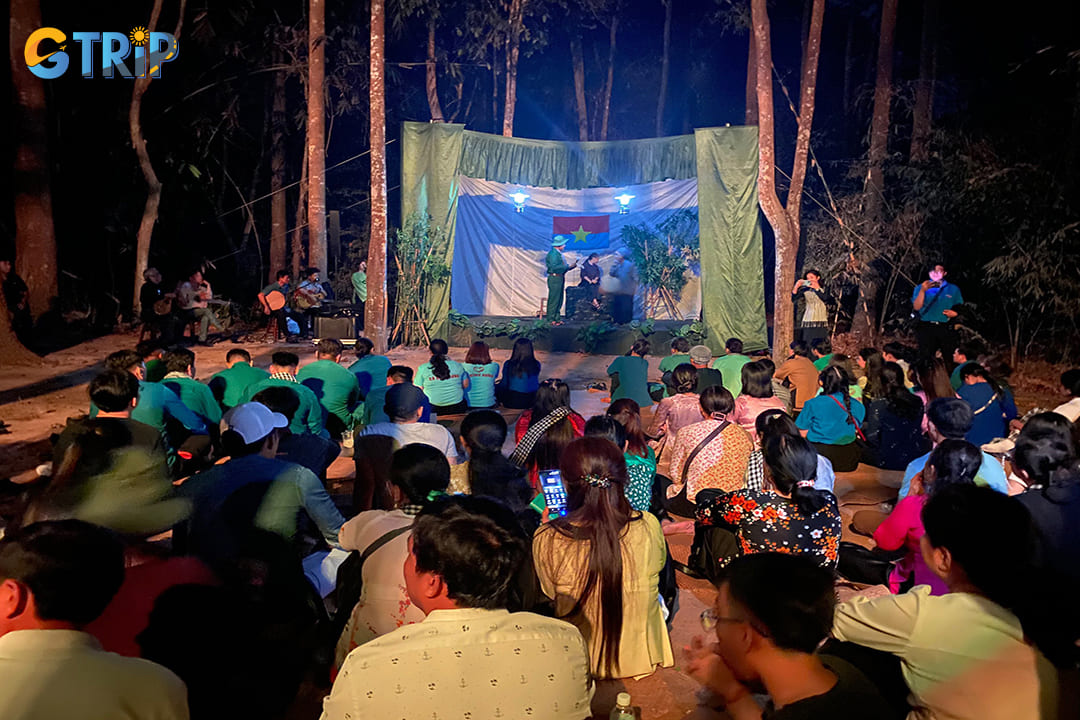
As you walk through the open-air setting, you'll witness vivid scenes brought to life through live performances and atmospheric effects
Travel tips for visiting the Cu Chi Tunnels
Visiting the Cu Chi Tunnels is an immersive experience, shedding light on the complexities of the Vietnam War and offering insight into guerrilla tactics. To ensure a smooth and enlightening visit, consider these key travel tips:
- Dress appropriately: Wear lightweight, breathable clothing and long sleeves to protect against sunburn and insect bites.
- Wear sturdy footwear: Closed-toe shoes or sneakers are essential for navigating uneven terrain and tunnels.
- Bring sun protection: Pack sunscreen, sunglasses, and a wide-brimmed hat to shield yourself from the tropical sun.
- Stay hydrated: Carry a water bottle to prevent dehydration in the hot and humid climate.
- Be mindful of claustrophobia: The tunnels are narrow and can be overwhelming; consider bypassing certain sections if necessary.
- Follow safety guidelines: Listen to your guide’s instructions and be cautious when entering tunnels and exhibits.
- Respect the historical site: Avoid touching artifacts and refrain from littering to help preserve the tunnels.
- Engage with the tour: Ask questions and listen attentively to gain deeper insight into the history of the Cu Chi Tunnels.
- Be considerate of noise levels: Maintain a respectful volume, as the site holds deep historical significance.
- Check accessibility options: Some areas may not be suitable for all tourists, so inquire about alternative routes if needed.
By following these tips, you can ensure a respectful, safe, and educational visit to one of Vietnam’s most historically significant landmarks.
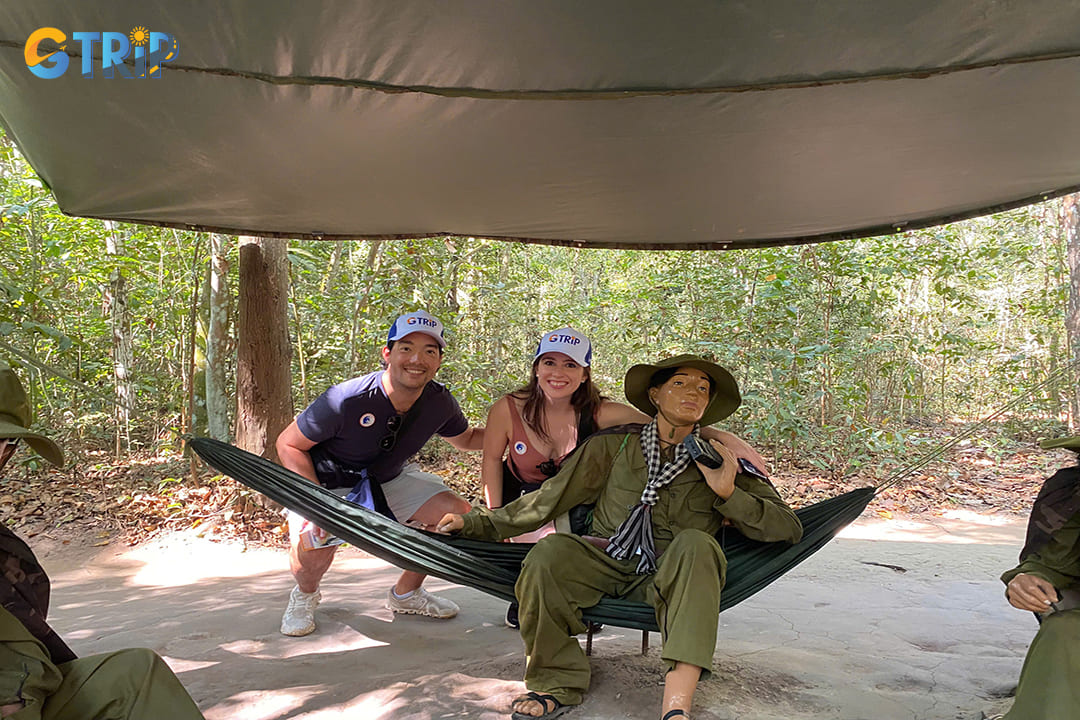
To ensure a smooth and enlightening visit, consider these key travel tips
FAQs about visiting the Cu Chi Tunnels
When planning a visit to the Cu Chi Tunnels, potential tourists often have a variety of questions about the experience awaiting them. These queries typically focus on logistics, safety, and the overall visitor experience.
What is included in a guided tour?
A guided tour includes access to the tunnels, interactive exhibits, and often a visit to the nearby War Remnants Museum, with commentary from knowledgeable guides.
How physically demanding is the tour?
The tour can be moderately challenging, as some sections are narrow and require crawling, though alternative above-ground routes are available for those who prefer.
Are the tunnels appropriate for children?
The tunnels are suitable for older children, but parents should supervise closely and consider the war-related exhibits and uneven terrain.
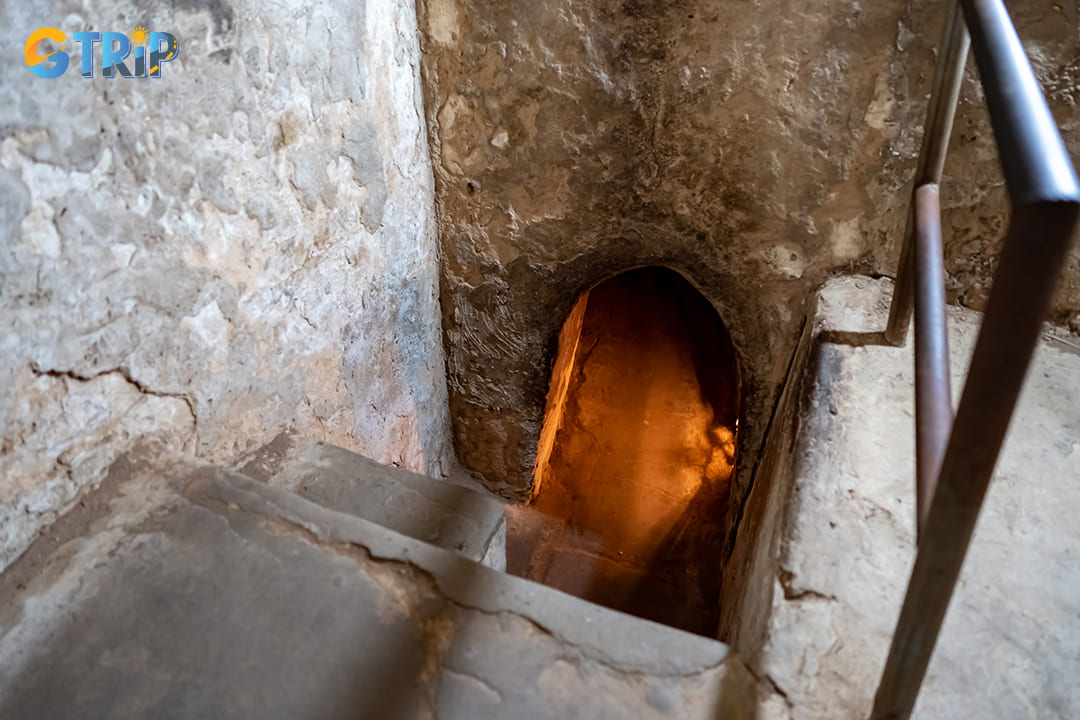
Parents should be prepared to explain the exhibits and ensure that children are supervised
The Cu Chi Tunnels offer a unique insight into Vietnam’s wartime history, letting visitors explore the underground network, witness reenactments, try activities like shooting ranges, and enjoy the Ben Duoc swimming pool. With well-preserved tunnels, interactive exhibits, and knowledgeable guides, the site provides an educational and immersive journey into the Vietnam War era. If you are interested in the Cu Chi Tunnels or other attractions in southern Vietnam, book your Ho Chi Minh City tours with GTrip - Vietnam Travel Agency for a guided experience that brings history to life.

